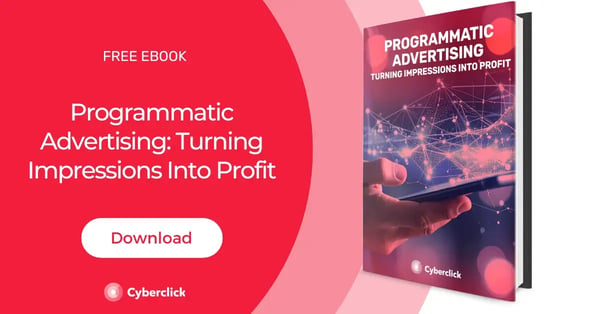By Estela Viñarás, on 12 September 2016
Content Marketing is becoming increasingly popular as a key strategy in attracting qualified traffic.
In today’s day and age, it is essential that companies dedicate significant portion of their resources to creating specialized content that solves their buyer personas questions and concerns, turning themselves into industry experts.
This traffic, lead and sales generation strategy generally takes a certain amount of time, during which users go through the well-known conversion funnel.
Content is not only an incredible tool to increase short and long term sales, but they also present a great alternative to outbound ads, which are more focused on sales in the short run.
In other words, we can effectively and immediately convince the user to buy or hire a product or service through an initial contact that offers truly interesting content to potential buyers.
Let’s take a look at some real examples!
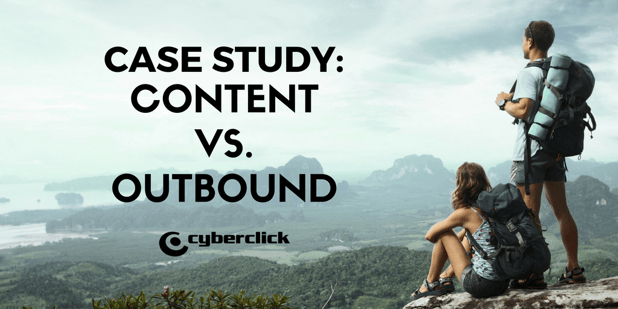
1# Product campaign: Six-Pack Care Ab Bench, from Groupalia
To achieve the goal of generating immediate sales of Groupalia’s Six-Pack Ab Bench, we created a Twitter Ads campaign that included two types of Twitter Card ads, with similar images, but different copies:
- 100% Outbound-focus: Copy designed to achieve conversions on the ecommerce page, with sole focus on the product:
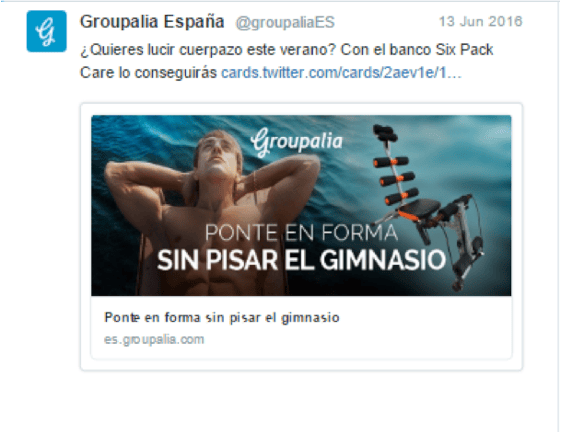
“Do you want to achieve that ‘perfect body’ this summer? The Six Pack Care bench will get you there” and “Get in shape, without needing a gym”
The link redirects to the respective ecommerce page, where the user can initiate the purchase with one single click.
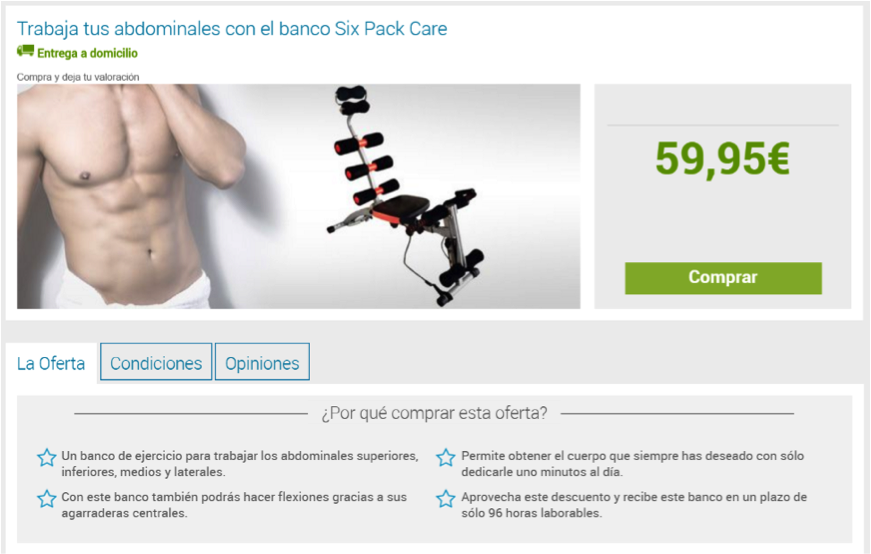
- Content focus: Copy designed to bring value to the user, by offering relevant information regarding the product’s advantages:
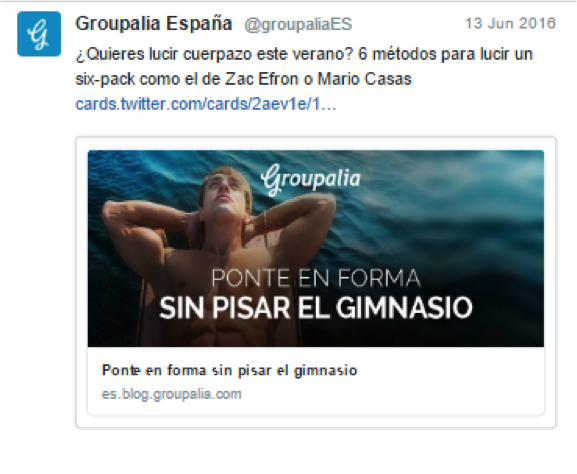
“Do you want to achieve that ‘perfect body’ this summer? 6 tricks to getting a six-pack like Zac Efron or Mario Casas”
In this case, the link redirects to the company’s blog, to the article “6 tricks to getting a six-pack like Zac Efron or Mario Casas”. In this post, the notion of this product is introduced subtly and in context, as one of the ways to achieving that ‘perfect body’ through exercise sets:
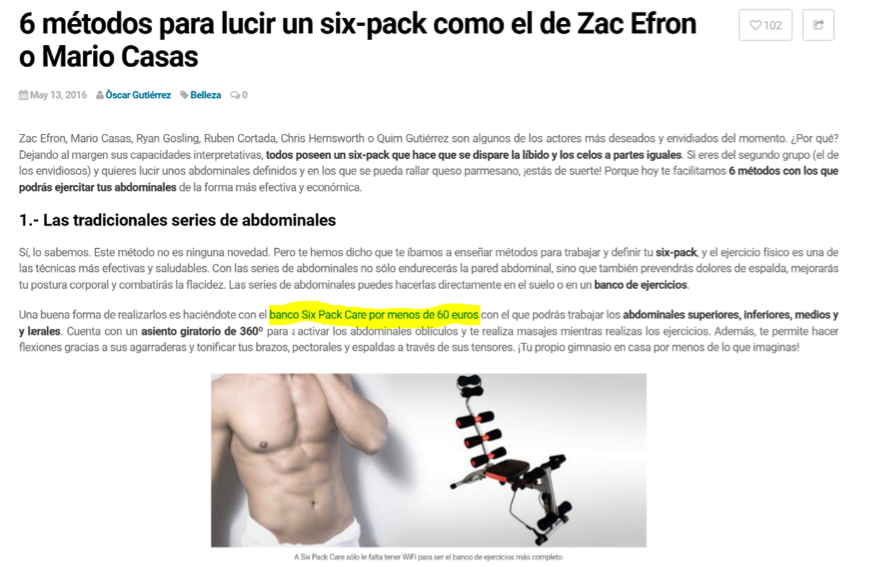
Results
Both ads were active as long as necessary to have gathered enough conclusive information to compare the two.
These were the recorded results, which show a significantly higher reactivity in the content-oriented format, both within Twitter itself and in purchasing behavior:
- The content focused ad achieved a 0.45% CTR vs. a 0,27% CTR of the outbound-focused offer.
- The copy’s engagement rate redirecting to a blog post was also higher. In this case it was 0.85%, 17% higher than the engagement generated by the ad which was focused solely on the product itself.
- These two metrics, which are both essential for an accurate interpretation of the Twitter Ads algorithm, significantly increased the content-oriented ads’ number of impressions and, consequently, its visibility.
In terms of sales, the ad redirecting traffic to the blog achieved 14 conversions in total, thanks to the link to the product included in the article. The ad redirecting traffic directly to the ecommerce achieved only 1 sale in the same amount of time.
2# Service campaign: high-speed train routes linking Spain and France, with Renfe-SNCF en Cooperación
For Renfe-SNCF en Cooperación’s sales generation project, we decided to compare the traffic brought to the website from two different Twitter Ads campaigns over a period of 15 days:
- 100% Outbound-focus: This campaign directly promoted tickets reservation for high-speed trains from Spain to France, at “the best prices”, specifying, in this case, a trip to Paris.

“What is your favorite place in Paris? Travel high-speed and come visit the magnificent City of Lights”
Users who responded to this ad could directly access the Renfe-SNCF en Cooperación home page, which features an image carousel and a search form for the available trains:
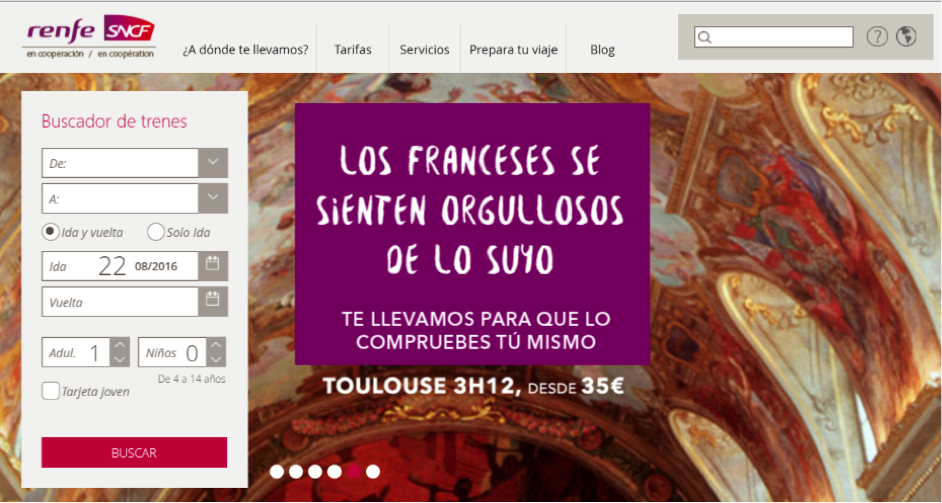
- Content-oriented: A second campaign was launched simultaneously, focused on offering the Spanish users pieces of information and curiosities regarding their neighboring country, France, through a series of ads on different topics.
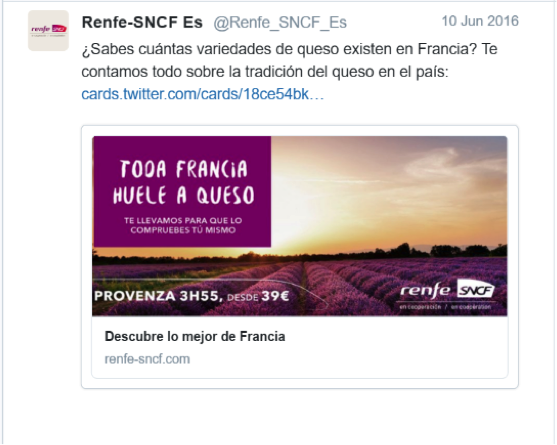
“Do you know how many types of cheeses there are in France? Read here about the country’s cheese-y traditions”
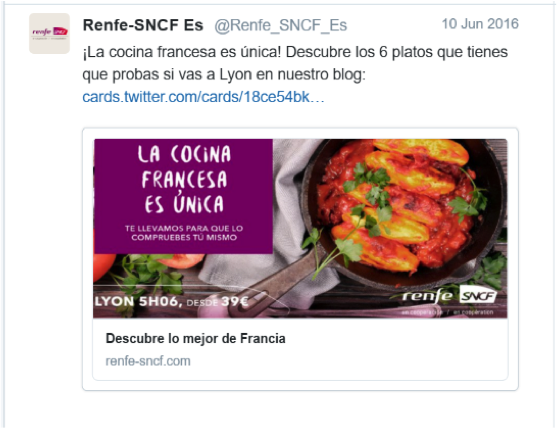
“French cuisine is unique! Discover 6 dishes that you mustn't miss out on when visiting Lyon on our blog:”
These WebCard Ads redirected users to the company blog, where they could then read the full articles regarding these topics.
Take the French Cheese ad for example, below you can see the respective post “The French tradition and its cheese”. As you can see, the article is accompanied by a sidebar which contains the same search panel for the available trains:
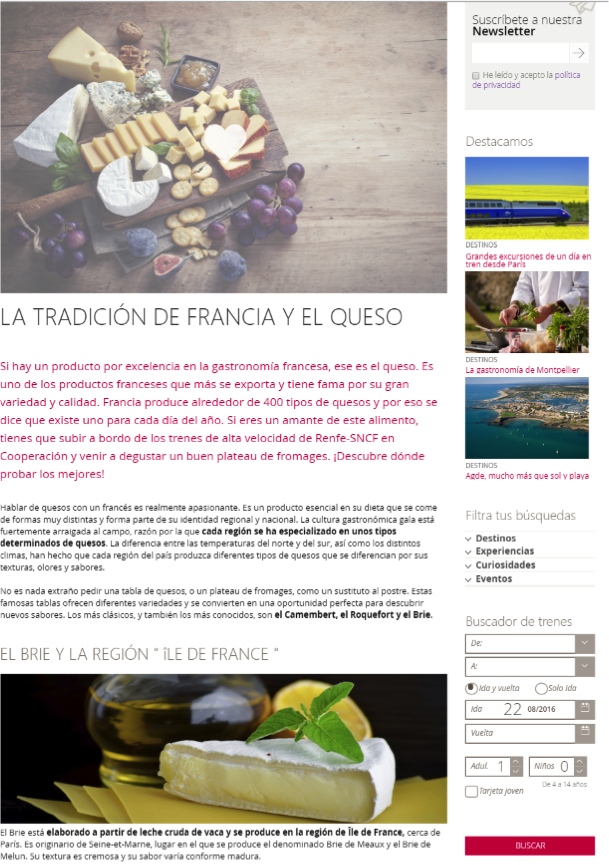
Results
Both campaigns shared the same goal: maximizing the amount of time users spent on the website as well as increasing the number of searches and of ticket purchases.
These were the different results:
- The campaign on characteristics of French culture, focused on content, reached an average CTR of 0.52%, whereas the best rate achieved by the more traditional offer was 0.27%. As we can see, offering content was able to almost double the interaction with the respective links.
- Similarly, the engagement rate achieved by the ads redirecting to the blog was 1.05%, significantly higher than the engagement levels achieved by the campaign that only promoted the offer (0.71%).
- As for the bounce rate, the traffic coming from the offer-type ads recorded a 10% higher bounce rate than the content-focused campaign.
- Last but not least, we confirmed that the two variations showed a very similar conversion rate into ticket reservations.
The results of both case studies indicate that a focus on content in Social Ads not only generates higher click and engagement rates (which help in terms of visibility and cost reductions), but that they also help in converting, often even more efficiently than a more “standard” offer redirecting users to the final purchase or hiring page.
And so, when looking at how to increase sales, we see that a blog or content microsite can serve as an excellent “bridge” by offering high quality content, directing users through various forms (links, forms, etc.) to pages closer to the conversion.
Estela Viñarás

